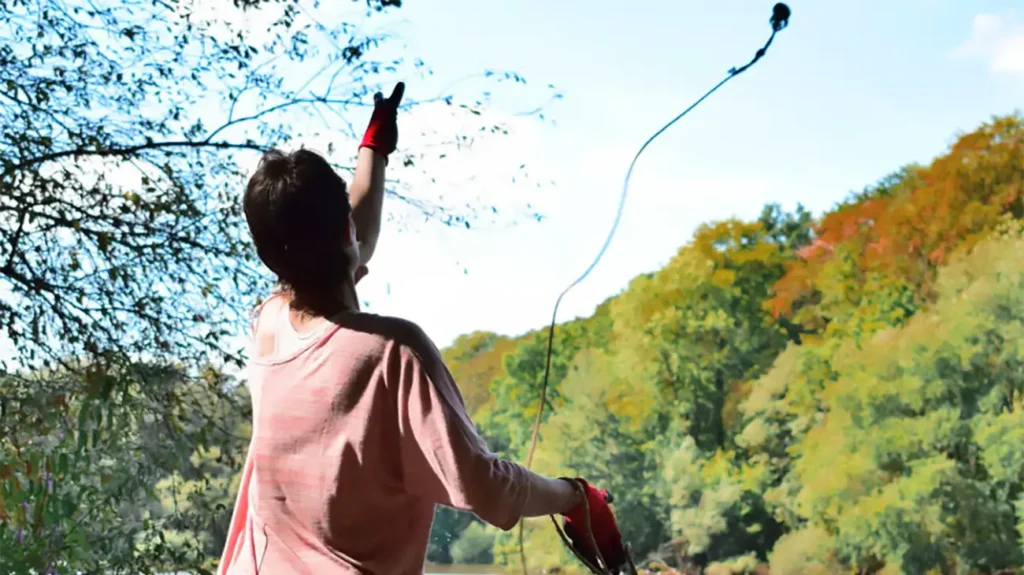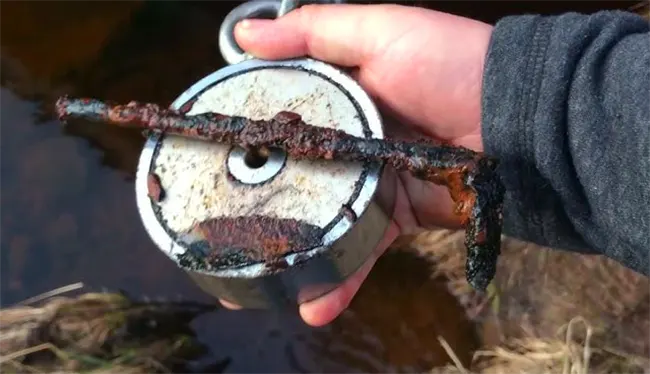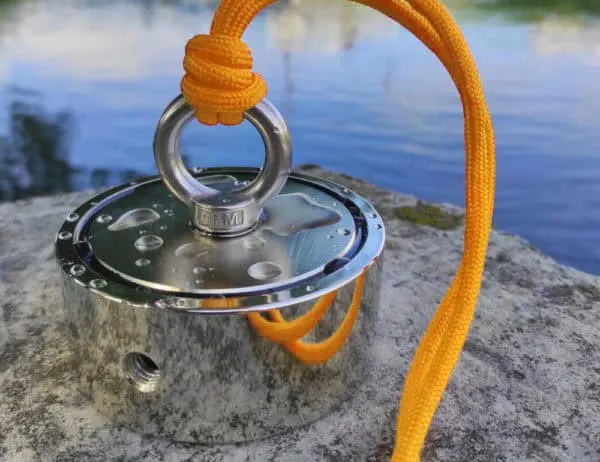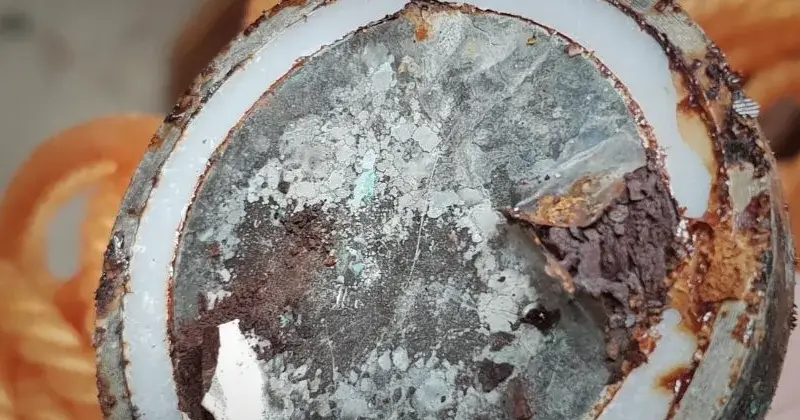Magnet fishing is a recreational way to explore hidden treasures beneath the water’s surface, but if we want to reap the rewards of this activity, we need more than just a magnet. We also need to master how to use it properly while ensuring our own safety. Today, let Osencmag guide you on how to use magnet fishing safely and effectively. Whether you’re a beginner or an experienced magnet angler, I hope the following experience can help you.
How to fish using a magnet?
Magnet fishing is a popular outdoor adventure and treasure hunting activity in recent years. Using a powerful magnet attached to a rope, we can pull interesting metal objects from the unknown underwater world of lakes, rivers, etc. But if you are new to this sport, you need to know some basic common sense and safety rules to safely and effectively carry out magnet fishing. Hurry up, follow me.
Magnet fishing essentials.
Before we get started, we need to prepare the necessary tools. You will see many magnet fishing items online, including sets and individual parts. Whether you add the kit to your shopping cart for the convenience of adding it to the kit, or purchase each part separately to build a custom tool kit, here are the essentials you need for your first magnet fishing trip.
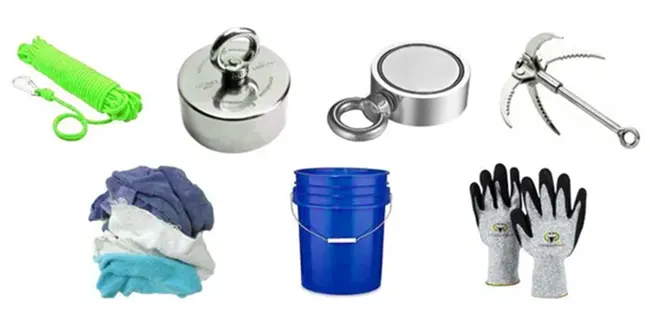
- Fishing magnet: To catch larger metal objects, you need a strong neodymium magnet. Neodymium magnets come in multiple grades (usually divided into n35 to n52 grades), and you can check the specifications of the fishing magnet when purchasing. The larger the number after the “N”, the stronger its magnetism. The stronger the magnetism, the larger the metal object it can catch. You can learn more about how to choose the right fishing magnet in our corresponding blog.
- Synthetic nylon rope:When the magnet is thrown into the water, we need a synthetic rope that is wear-resistant, corrosion-resistant, and UV-resistant to pull it. Choose a rope with a breaking strength greater than the magnet’s pulling force (at least twice the magnet’s pulling force), which will prevent the magnet from breaking when pulled hard. In addition, the length should be considered in combination with the depth of the fishing area.
- Thread locker:Before putting a new magnet in the water, you need to apply thread locker to the connection between the magnet and the rope carabiner. This prevents the magnet from loosening and getting lost underwater, and no one wants this to happen.
- Gloves: Equip two pairs of sturdy gloves (one pair for practical use and one pair for backup) to protect your hands from rope pulling scratches. There is another situation: when you see the fish hooks, rusty baits, and sharp metal fragments brought back by the magnet, no one wants to clean them with bare hands.
- Aluminum carabiner:Although using a carabiner to connect the rope to the magnet in some complex fishing scenarios is a relatively weak link in the device, it is still recommended that novice friends use a carabiner to help connect, because tying is a job that requires technology. At the same time, the versatility of the carabiner allows us to easily replace different magnets or add grappling hooks to catch odd-shaped objects. It is usually recommended to choose a carabiner with the same anti-breaking strength as the rope and a locking mechanism, which can prevent the gate from being pushed by unknown rocks while underwater, causing you to lose the magnet.
- Scraper or brush: A scraper or wire brush can help remove mud, algae or small metal fragments from the fishing magnet after the activity to extend the life of the device. More detailed maintenance instructions will be mentioned below.
- Storage container:A bucket or storage box can be used to store magnet fishing tools and retrieved items separately. This helps to make our fishing experience more organized.
After preparing the equipment, we can take action. Make sure to fish in a legal area with a license. You can check the local laws on magnet fishing in advance, as some places may restrict magnet fishing for environmental or safety reasons.
A step-by-step guide to magnet fishing best practices.
Once we are fully prepared for the sport of magnet fishing, the desire to explore prompts us to go outdoors immediately. In order to make the most of this outdoor exploration, it is important to follow some good practices.
First, we need to choose a location where metal objects may exist – old bridges, docks and rivers near historical sites are ideal locations, but be aware of local legalities to avoid unpleasant things.
After wearing protective gloves and attaching the magnet to the rope, you can throw the magnet into the water in a smooth arc. Keep a certain tension on the traction rope after the magnet enters the water and let the magnet sink naturally to the bottom of the water.
Once the fishing magnet touches the bottom of the water, we can slowly drag it on the water surface, just like leading a horse to graze, leisurely and natural. If the dragging process is attached to the metal object, we will feel a noticeable heaviness. If you feel the weight increase, you can pull the magnet up from the water to see if you can do it. Don’t rush this process, keep the lifting action rhythmic and slow. Pulling the rope sharply may cause the object to slide off the magnet.
When the magnet is pulled to the surface of the water, we can see that it has brought an unexpected metal object. Sometimes it may be an interesting pocket watch, or it may just be a rusty nail. But it doesn’t matter, because you have mastered the basic operation of magnet fishing, and you will always catch an exciting object when you are not paying attention. Please remember to clean the stains on the surface of the magnet before throwing it into the water again to ensure that it has the magnetism it should have.
Tips for Magnet Fishing Success.
Mastering and running some knocks properly can improve the experience of magnet fishing this time.
- Some metal objects may be very small, and we can’t feel them because of the resistance of the water. Every time the magnet moves under the water for a while, you can pick it up and check it once.
- Preparing multiple fishing magnets to throw them into the water in different directions can improve work efficiency, and can also be used as a backup in case of loss or damage.
- Constantly trying different casting, pulling, and trolling techniques can increase our success rate in finding hidden treasures.
- Using double-sided or 360° fishing magnets when the budget allows can increase your chances of catching black metals from all directions. Of course, this requires sufficient arm strength.
- Plan your fishing locations and look online for historic or heavily trafficked waters, such as historic waterways, piers, and public parks with lakes or rivers.
- Keep a journal of where you’ve been and what you’ve found, which can help you plan future trips.
- Always be patient and don’t get discouraged if you don’t find something right away. Try a different location and start over.
Magnet fishing is an outdoor activity that requires a combination of curiosity, patience and some physical skills. With the right preparation, technique and some practical tips, we can use it to explore the hidden treasures beneath the water’s surface.
What Are the Safety Tips When Using Fishing Magnets?
Safety is always the most important thing when doing this fun activity. Here are the key safety measures we have summarized in past practice:
- Fishing magnets often bring up some rusty iron garbage from the water, and you must be careful when cleaning them. It is highly recommended to wear a pair of sturdy cut-resistant gloves to protect your hands from sharp objects.
- During the fishing process, we need to pull up the fishing magnet regularly and scrape off the algae, dirt and rocks on the surface. Proper cleaning can maintain the effectiveness of the magnet to avoid missing an interesting discovery at a critical moment.
- If you are dragging the fishing magnet along the bottom of the boat in the center of the water, be careful not to get hooked on unknown objects such as rocks or branches on the bottom of the water. If the magnet is stuck, try to pull it from different angles to dislodge it, rather than pulling it directly upwards, as this may break the connection. If unfortunately the rope breaks! You will need to use a spare fishing magnet to salvage the first fishing magnet.
- Always be aware of your surroundings and potential hazards before starting and during the salvage process, and avoid fast currents, slippery roads, or unstable docks or bridges.
- Dispose of any trash or debris you encounter while magnet fishing to help protect the environment and keep waterways clean. Provide a pleasant experience for future explorers and protect our Mother Earth together.
- Before embarking on any magnet fishing adventure, familiarize yourself with the laws and regulations regarding magnet fishing in your area. Some areas may require a license or have restrictions on certain locations.
Hopefully, all magnet fishing enthusiasts can gain useful tips from our experience. Have a good experience and fruitful results in the next fishing activities.
How to Care for and Maintain Fishing Magnets?
After spending hours pulling a watch or antique from the bottom of the water, you may have also brought along dust and metal fragments. Fishing magnets are bound to collide with mud, rocks and various underwater objects underwater, and even the strongest magnets will quickly wear out if not properly cared for. Neglecting basic maintenance can cause the neodymium magnets inside to rust, reduce magnetic strength and shorten life, which may affect your next magnet fishing exploration. Taking some time to perform some simple maintenance procedures on fishing magnets can keep them in the best condition. Let me teach you some basic and practical maintenance tips.
Cleaning Magnets
After each outing, rinse the magnets with clean water and a soft brush to remove any remaining dirt, sand and unknown particles. Prevent any accumulation that may affect the performance of the magnets. If these attachments are left unattended for a long time, the magnets will corrode and weaken.
If your magnets have been used for a long time and have obvious rust (which is impossible to completely avoid), then it is time to give them a thorough cleaning. Remove any removable parts (such as eyebolts or handles) and soak them in warm soapy water with the magnet for 15 minutes. During this time, we can prepare other tools. After the rust has softened, use a brush to remove it and rinse it thoroughly with clean water. If you use a commercial rust remover during this process, remember to wear gloves and keep the air ventilated.
Dry thoroughly
Neodymium magnets are particularly prone to rust if they are left wet for a long time. After rinsing, immediately wipe it completely dry with a soft cloth and place it in a ventilated place to dry naturally. Don’t be too anxious to put it away, because moisture left on the metal surface will cause rust over time, which will compromise the performance of the fishing magnet. This is something none of us want to happen.
Proper storage techniques
We have all heard the saying “everything has its place, and everything has its place”, and the same is true for fishing magnets. When not in use, store magnets in a dry, cool place away from direct sunlight and moisture. Humid environments are prone to rust and accelerated corrosion, which means that damp basements and garages are not ideal storage locations. If you can only store them in the basement, you’d better prepare a plastic container to store them in, which can not only isolate moisture but also provide a buffer environment to prevent accidental collisions, impacts and close proximity with other items that may cause demagnetization.
Rust and Corrosion Prevention Measures
Even if the magnets are coated at the factory, taking some appropriate rust prevention measures can ensure that the fishing magnets remain effective for a longer time, as time and money allow. Apply a layer of motor oil or rust prevention spray (wax or waterproof sealant can also be used) to form a barrier to protect the magnets from moisture and air. Be sure to wipe off excess oil and let it dry naturally before storing. In addition to using rust prevention liquid, silicone packs are another effective tool to prevent rust: storing fishing magnets with silicone packs in an airtight plastic box can help absorb condensation, thereby reducing the risk of rust during storage.
Regular Inspection
Fishing magnets also need regular inspections like other tools in the basement to detect and repair defects as early as possible to avoid bigger problems when they are used. Inspect the surface of the magnet for cracks, chips, or scratches. These physical damages expose the magnetic components inside the core to water and air, which reduces effectiveness and accelerates wear. If the signs of wear are minor, a repair coating can be applied. You can try to pull up a known weight of metal with it to check if the magnetism is still as expected. If you find that the magnetism has decreased, then only replace the magnet. Also remember to check the rope for wear and fragility, no one wants the rope to break when pulling objects out of the water.
In addition to the above maintenance tips, avoiding extreme temperatures, avoiding violent collisions between magnets and other hard surfaces, and using rope loops to reduce impact damage are also protective measures that can be taken. As with any tool and hobby, scientific and reasonable maintenance can effectively extend the life and safety of magnet fishing equipment. A little more maintenance, a little more safety. Let you focus on the excitement of exploration.
Future development considerations for magnet fishing: Legal and ethical considerations
I believe you already know how to use fishing magnets and maintain them, but as magnet fishing becomes more and more popular, the supervision and views of relevant government departments and individuals on this activity will continue to change. From the government’s perspective, management planning will be carried out in three aspects in the future:
- Legislation: Regional regionalization will introduce laws specifically for local magnet fishing.
- Regulated licensing: Improve the magnet fishing licensing system, and in the future it may be required to hold a license to magnet fishing.
- Limited area: Local land administration bureaus may divide ecological protection key protection areas or sensitive waters into strict bans.
For the majority of individual enthusiasts, balancing hobbies and independently establishing a good awareness of magnet fishing is something worth promoting and praising:
- Civilized ideological education: All magnet anglers should have responsible environmental protection behavior.
- Respect history: Actively cooperate with historical preservation organizations when discovering some items with historical, cultural and scientific research significance.
- Active research: Continuously share positive and positive magnet fishing influences in relevant online or offline magnet fishing communities.
This interesting activity of magnet fishing requires the joint efforts of all participants to build a good fishing ecology. If you are planning to purchase a batch of high-performance and reliable fishing magnets for your street store or Amazon store next time to cater to the fanatical outdoor passion of local fishing enthusiasts, please contact Osencmag. Our factory has reliable production capabilities, and the complete customizable solutions can cater to your local personalized needs and promote your brand.
What should I do if my magnet is stuck?
First, stay calm and avoid pulling too hard, as this could damage the rope or magnet. Magnet fishing often presents challenges like this. Try pulling on the rope at different angles or gently shaking it to loosen it. If it’s stuck on something heavy, you may need a crowbar or other tool to use leverage to untangle it.
Can magnet fishing be a dangerous hobby?
Yes, there are some potential hazards that can occur if you’re not careful, but most of the risks are manageable. Be careful with sharp or rusty objects, strong currents, or entanglements. Wearing gloves and using safety gear can minimize cuts and abrasions. And choose a fishing magnet that matches your actual personal ability, because if you grab something very heavy but don’t have enough strength to pull it up, it will fall. Dangerous objects may be caught: including loaded guns, unexploded ammunition, and sharp metal fragments.
So avoid dangerous places. As long as you are prepared and respect the environment, it can be a safe and rewarding hobby.
What is the best length of rope for magnet fishing?
In most magnet fishing situations, a 50- to 100-foot rope is sufficient. Choose the length based on the depth of the water where you’re fishing—shorter ropes for shallow pools, longer ropes for rivers or bridges. Too short and the magnets have trouble reaching the bottom; too long and they become bulky and tangled.
How do I know if my fishing magnet is losing power?
If it’s having trouble lifting objects it used to lift easily, or if it feels like it’s pulling objects with noticeably less force than before, the magnet may have lost its strength. It’s time to retire.
Why isn't my fishing magnet picking up anything?
This could be because you’re in an area with little metal debris, the surface of the magnet is in poor condition, or the magnet isn’t making proper contact with the underwater object. Magnet fishing requires patience and the right environment. Make sure the magnets are clean and have some tips to maximize efficiency. Good luck, I hope everything goes well for you!
